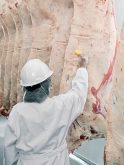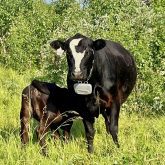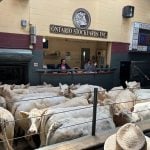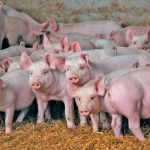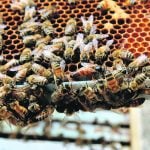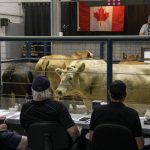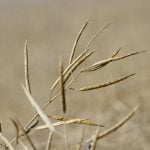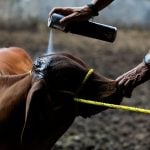Hormone implants and feed additives such as ionophores (e.g. monensin/Rumensin), beta-agonists (e.g. ractopamine/Optaflexx) and MGA (to suppress heat in heifers) have allowed Canada’s feedlot sector to dramatically improve growth rates, feed efficiency and environmental performance. In-feed antimicrobials to prevent liver abscesses (e.g. tylosin) also have an indirect benefit because healthy cattle grow better.
While consumers support reducing beef’s environmental footprint, some international markets and food companies won’t accept these conventional growth- or productivity-enhancing technologies.
In response, a variety of alternative growth promoters have been marketed as natural replacements for conventional productivity-enhancing technologies. These include feed enzymes, essential oils, direct-fed microbials and probiotics.
Read Also

Regenerative ranching sees Alberta family through three decades of ups and downs
Alberta ranchers have found regenerative ranching key to surviving ups and downs of the business
The University of Manitoba’s Dr. Kim Ominski and Agriculture and Agri-Food Canada’s Dr. Tim McAllister studied whether alternative growth promoters can produce the same productivity and environmental performance benefits as conventional productivity-enhancing technologies (Environmental performance of commercial beef production systems utilizing conventional productivity-enhancing technologies; doi.org/10.1093/tas/txac074).
What They Did: Researchers used data from a Feedlot Health Management Services trial at Cattleland Feedyards (Strathmore, Alta.). Crossbred yearling steers (348 head averaging 1,100 lbs.) and heifers (348 head averaging 860 lbs.) were fed eight different finishing diets (90 per cent barley grain, eight per cent barley silage and two per cent vitamin and mineral supplement). The control diet contained no feed additives. The conventional feedlot diet contained monensin, a beta-agonist and tylosin. The conventional heifer diet also contained MGA. The other six diets contained alternative growth promotants (an enzyme to improve fibre digestibility, an essential oil-spice blend to improve appetite, and a direct-fed microbial or probiotic to support rumen function). These were added to the control diet (three diets) and the conventional diet (three diets). Within each diet, half the steers and heifers were also given a growth-promoting implant (trenbolone acetate). Researchers collected growth performance and carcass data. They also assessed how these choices would affect greenhouse gas and ammonia emissions and the land and water required to produce each pound of beef.
[More ‘Research on the Record’ with Reynold Bergen]
Researchers were able to compare what the industry currently does (conventional diet and implants) to what would happen if we didn’t use growth promoters (control diet, no implants), whether alternative growth promoters could replace current production practices (by adding them to the control diet), whether they could enhance current practices (by adding them to the conventional diet) and how these choices would affect feedlot performance, carcass grades and environmental impacts.
What They Learned: There were no interactions, meaning that the feed additives had the same effect in both implanted and nonimplanted cattle, and the implants had the same effect regardless of the diet.
Feed additives: Steers and heifers fed the alternative diets generally grew as rapidly and efficiently as cattle fed the control diet, but not as well as cattle fed the conventional diet. Adding alternative growth promotants to the conventional diet did not improve performance. Steers fed the conventional diet grew at least seven per cent faster and five per cent more efficiently than steers fed the control diet. Adding alternative growth promotants to either the control or conventional diet didn’t change the results. Conventionally fed heifers grew at least six per cent faster and six per cent more efficiently than heifers fed the control diets, regardless of whether they were given alternative growth promoters or not. Carcass yield and quality grade were the same for all eight dietary treatments.
Implants: Implanted steers grew 18 per cent faster and 14 per cent more efficiently than non-implanted steers, and implanted heifers grew 10 per cent faster and eight per cent more efficiently than nonimplanted heifers. Implants didn’t affect carcass yields or quality grades in either steers or heifers.
Environmental impacts: The conventional production system had the lowest environmental impact. None of the alternative production strategies produced less greenhouse gas, ammonia, or required less water or land to produce each pound of beef than the conventional system. In fact, removing growth promotants increased both land and water use by 19.5 per cent (steers) and 14.6 per cent (heifers), greenhouse gas emissions by 15.8 per cent (steers) and 10.5 per cent (heifers), and ammonia emission by 11 per cent (steers) and 3.4 per cent (heifers).
So What Does This Mean: Growth and efficiency go hand-in-hand with environmental performance. Cattle that grow faster reach market weight sooner, and spend fewer days emitting methane and ammonia. More efficient cattle need less feed to reach market weight. This means less land and water are needed to grow feed.
In this study, conventional feed additives and hormone implants were a more effective way to improve growth rate and efficiency, reduce days to market and improve the environmental footprint than the alternative probiotic, direct-fed microbial, enzyme and/or essential oil.
Most feedlots use implants and conventional feed additives because they are safe and cost-effective and because economic benefits of using them outweigh market incentives to stop using them. Feedlots respond to market signals. If premiums for “raised without” beef become high enough, or if alternative productivity-enhancing alternatives become as reliable and cost-effective as conventional technologies, feedlots will respond.
The Beef Cattle Research Council is funded by the Canadian Beef Cattle Check-Off. The BCRC partners with Agriculture and Agri-Food Canada, provincial beef industry groups and governments to advance research and technology transfer supporting the Canadian beef industry’s vision to be recognized as a preferred supplier of healthy, high-quality beef, cattle, and genetics.








